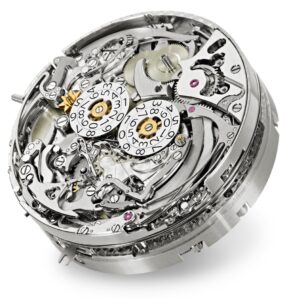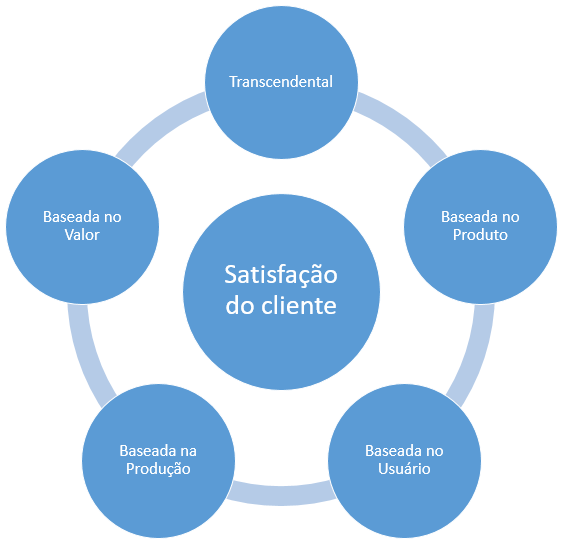In short, I define Quality as a set of characteristics contained in something that enables it to, at the very least, meet the consumer’s expectations. But is this a valid definition? Could there be a more appropriate one? Or is the definition of Quality actually definitions (plural), and therefore… it depends?
Definitions of Quality
In In The Beginning… There Was Quality and The Eras of Quality there is a bit about the history of quality (when and where the concern for it arose, its evolution, etc.); however, even though the concern for quality is something old, its definition in terms is somewhat recent (based on the age of the available literature on the subject).
Among the modern definitions of Quality, we have (but not limited to):
“The totality of requirements and characteristics of a product or service that determine its ability to satisfy certain needs.”
American Society for Quality – ASQ / The American National Standards Institute – ANSI, 1978
“Quality is the degree of excellence at an acceptable price and the control of variability at an acceptable cost.”
Robert A. Broh, 1982
“Quality is conformance to specifications.”
Philip Bayard CROSBY, 1986
“Quality is the absence of deficiencies.”
Joseph Moses JURAN,1992
“A quality product or service is one that perfectly, reliably, affordably, safely, and timely meets the customer’s needs.”
Vicente FALCONI,1992
“Quality is anything that improves the product from the customer’s point of view.”
William Edwards DEMING,1993
“Quality is developing, designing, producing, and marketing a product that is more economical, more useful, and consistently satisfactory to the consumer.”
Kaoru ISHIKAWA,1993
“Quality is the correction of problems and their causes throughout the entire series of factors related to marketing, design, engineering, production, and maintenance that influence user satisfaction.”
Armand Vallin FEIGENBAUM,1994
“The totality of characteristics of an entity that gives it the ability to satisfy stated and implied needs.”
NBR-ISO, 9000:2000
From these quotes, it becomes clear that the definition of Quality varies depending on the author (or entity). These definitions are not merely “saying the same thing in different words”—they actually convey different ideas of Quality:
- “Satisfaction [of needs]” (ANSI, NBR, and Feigenbaum);
- “Conformance [to specifications]” (Crosby);
- “Improvement and surpassing expectations” (Deming and Ishikawa);
- “Perfection [absence of deficiencies]” (Juran and Falconi).
“– Okay, so it means that the definition of Quality ‘depends.’ But why? Shouldn’t all these definitions mean the same thing regardless of the author?” Well, in that regard… Garvin explains.
The 5 Definitions of Quality
David A. Garvin – one of the more recent ‘gurus’ of Quality – observed that different “groups” understood quality based on their particular interests (meaning different groups with different focuses). However, despite their differing perspectives, certain “themes” were consistently found across those groups. Based on this observation, Garvin concluded that quality could be defined through five distinct approaches: the transcendental, product-based, user-based, manufacturing-based, and value-based approaches. Each approach offers a different definition.
Thus, the “Five Approaches to Quality” were born.
Transcendental Approach
“Quality is neither mind nor matter, but a third entity independent of the two… although Quality cannot be defined, you know what it is.”
Robert M. Pirsig, “Zen and the Art of Motorcycle Maintenance”
This is Quality as an innate, absolute, and universally recognized excellence. Even without being able to define it, we know when it’s present.
This approach is often linked to fine craftsmanship.

Product-Based Approach
“Differences in quality amount to differences in the quantity of some desired ingredient or attribute.”
Lawrence Abbott, “Quality and Competition”
Unlike the Transcendental approach, here quality is precise and measurable—based on the attributes of the product. For example, a “fine” rug may be defined by a high number of knots per square inch.

User-Based Approach
“Quality lies in the ability to satisfy wants…”
Corwin D. Edwards, “The Meaning of Quality”
Quality is based on meeting the needs of the customer or user (noting that “needs” may vary between users).
Quality is in the eye of the beholder.


Manufacturing-Based Approach
“Quality means conformance to requirements.”
Philip B. Crosby, “Quality is Free”
Quality is defined by meeting the requirements of the production process. If the process or design requirements are fulfilled, there is quality.
“Doing it right the first time” is considered excellence in quality.
Value-Based Approach
“Quality is the degree of excellence at an acceptable price and the control of variability at an acceptable cost.”
Robert A. Broh, “Managing Quality for Higher Profits”
There is quality when a product is “good enough” to meet the user’s needs at an “acceptable price” (cost-benefit).

“– Wait… But the authors of these definitions are ‘others’ – not Garvin. So how can he be called the creator of the ‘5 Approaches’?” There’s no issue here. These definitions were selected by Garvin himself – who conducted his study by observing different interest groups. The authors cited represent those groups. So, it’s only logical to derive the definitions from their representatives.
Why does this matter?
“- Oh, this talk about ‘definitions’ and ‘terms’ doesn’t really make a difference. It doesn’t add anything in practice.”
Considering the countless tools and methods available for Quality Management and continuous improvement, what’s the most efficient way to proceed: (1) experimenting with various methods and tools arbitrarily—until you stumble upon the most suitable one (the “trial and error” approach), or (2) identifying, among the existing approaches, the one that best fits the process at hand and selecting the tools accordingly?
Regardless of the chosen approach, the ultimate goal of quality management is always the same: customer satisfaction.


